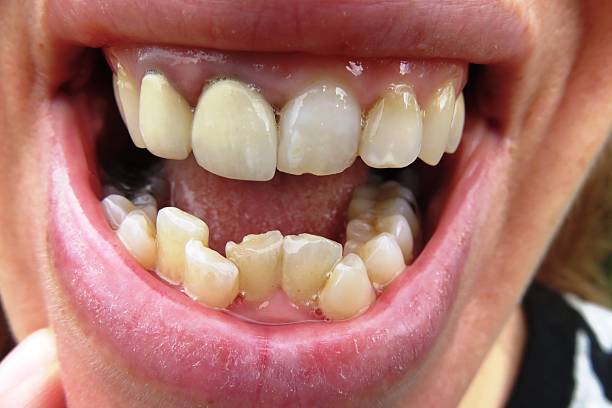Treatment of diastema ( gap between teeth)
Gap Between Teeth
A gap between teeth, also known as a diastema, is a space or separation between two or more teeth. It can occur naturally or as a result of tooth loss, misalignment, or other dental issues. It is a common dental concern and can be treated through various methods such as orthodontics, dental bonding, or dental veneers. The treatment option will depend on the cause and severity of the gap.
Causes of diastema
Diastema is a gap or space between two teeth. There are several causes of diastema, including:
Genetics: Some people are born with larger spaces between their teeth.
Thumb sucking or prolonged pacifier use: This can cause the front teeth to push forward and create spaces.
Tooth size discrepancy: When the teeth are not proportional in size, spaces can occur.
Overcrowding of teeth: When there is not enough room in the mouth for all of the teeth, they can become crowded and cause spaces.
Missing teeth: If a tooth is missing, the surrounding teeth may shift and create a gap.
Gum disease: Inflammation and recession of the gums can cause diastema.
Trauma: A traumatic injury to the mouth can cause changes to the teeth and surrounding tissues that can result in diastema.
Impacts of diastema
Diastema can have several impacts on oral health and appearance, including:
Aesthetic concerns: Diastema can affect the appearance of a smile, making some people self-conscious.
Difficulty in biting and chewing: Gaps between teeth can make it difficult to bite and chew food, leading to discomfort and potential damage to the surrounding teeth.
Increased risk of periodontal disease: The gap between the teeth can harbor bacteria and plaque, increasing the risk of gum disease.
Speech difficulties: Diastema can affect speech, particularly with the pronunciation of certain words.
Tooth misalignment: Diastema can cause shifting or crowding of the surrounding teeth, leading to further dental problems.
It is important to address diastema with a dentist or orthodontist to determine the best course of treatment. Treatment options may include orthodontic treatment, dental bonding, veneers or dental implants.
Treatment of diastema
The treatment of diastema depends on the underlying cause and the severity of the gap. Here are some common treatments for diastema:
Orthodontic treatment: Braces or clear aligners can be used to move the teeth and close the gap.
Dental bonding: A dental resin material can be applied to the teeth to close the gap and improve the appearance of the smile.
Veneers: Thin shells made of porcelain or resin can be attached to the front of the teeth to cover the gap and improve the appearance of the smile.
Dental implants: In cases where a missing tooth is the cause of the diastema, a dental implant can be placed to fill the gap and restore normal tooth function.
Gum surgery: In cases where gum disease or gum recession is causing the diastema, a gum surgery may be recommended to address the problem.
It is important to consult a dentist or orthodontist to determine the best treatment for your individual case of diastema. The dentist will examine the cause of the diastema and recommend the best course of action.







